by Alessandra Ressa
The story of Theater Filodrammatico is heartbreaking: from a glorious artistic hotspot in Trieste, where James Joyce lived and diva Eleonora Duse performed, to the first porn movie theater in Italy, and after that to oblivion, and, eventually, rubble.
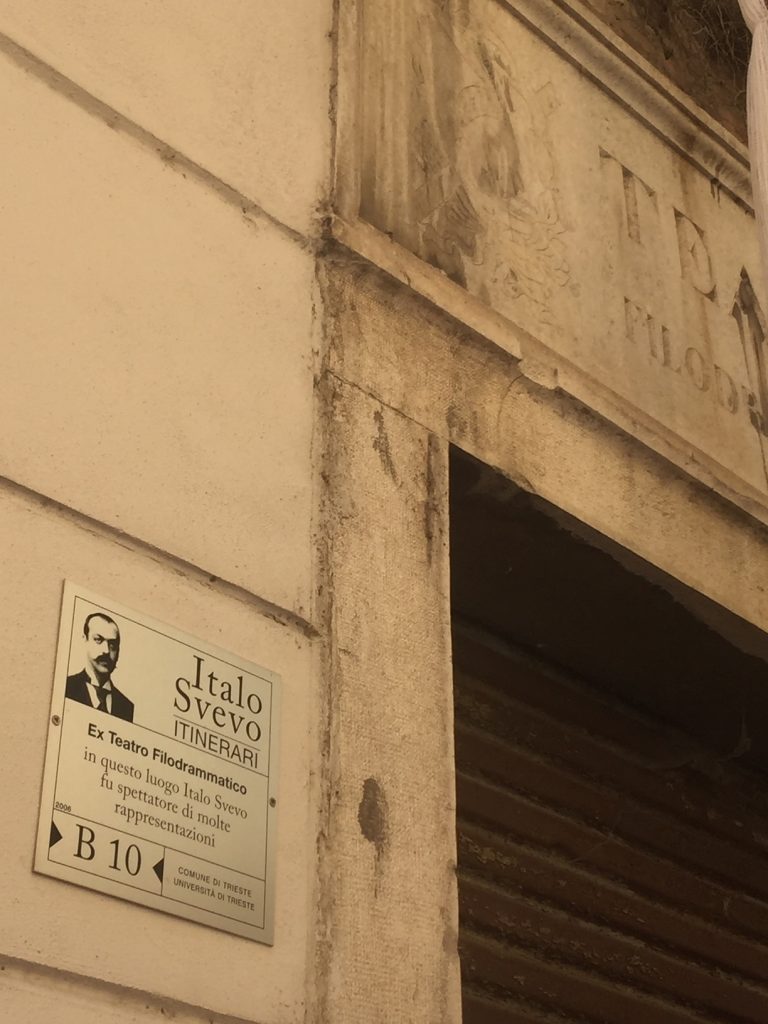
It was located in the tiny Via degli Artisti, at the foot of San Giusto hill by Piazza Benco, and all you can see today is theater’s original stone front sign, barely visible behind recently placed scaffoldings. Although the name of the street may lead you to imagine a sort of Trieste’s Monmartre, it was actually named after the workshops located there in the 1700s. There were blacksmiths, coppersmiths and carpenters banging all day and producing a variety of sounds – a sort of concert that could be heard thoughout town during daytime. Those were the “artists” of Via degli Artisti.

Built in 1828, Theater Filodrammatico had a hard beginning, as well as a hard life. Story goes that in 1826 a huge fire broke out from a cellar containing several barrels of grappa, which destroyed the whole block, leaving 35 people homeless. To help with reconstruction, one of the residents of the infamous block, Isaac Guetta, a wealthy man from the Jewish community, began a successful fundraising campaign. In 1827 he assigned architect Giuseppe Fontana the task to build a four – story building, part of which would have been Guetta’s new residence.
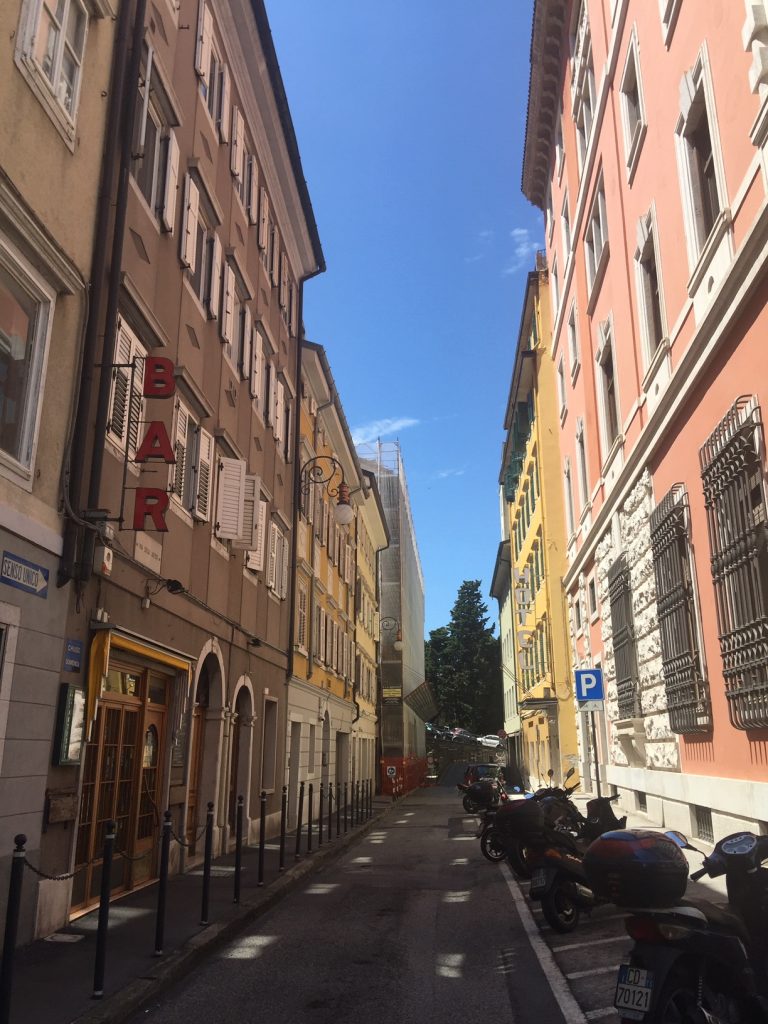
It was the equivalent of a skyscraper today so all neighboring residents whose houses had been spared by the fire filed a lawsuit. To complicate things, the municipality stepped in to claim ownership of a subterranean natural water source under the property. Incredibly, the controversy was over in less that two years (it would take at least 20 today) and the four-story building finally towered Via degli Artisti.
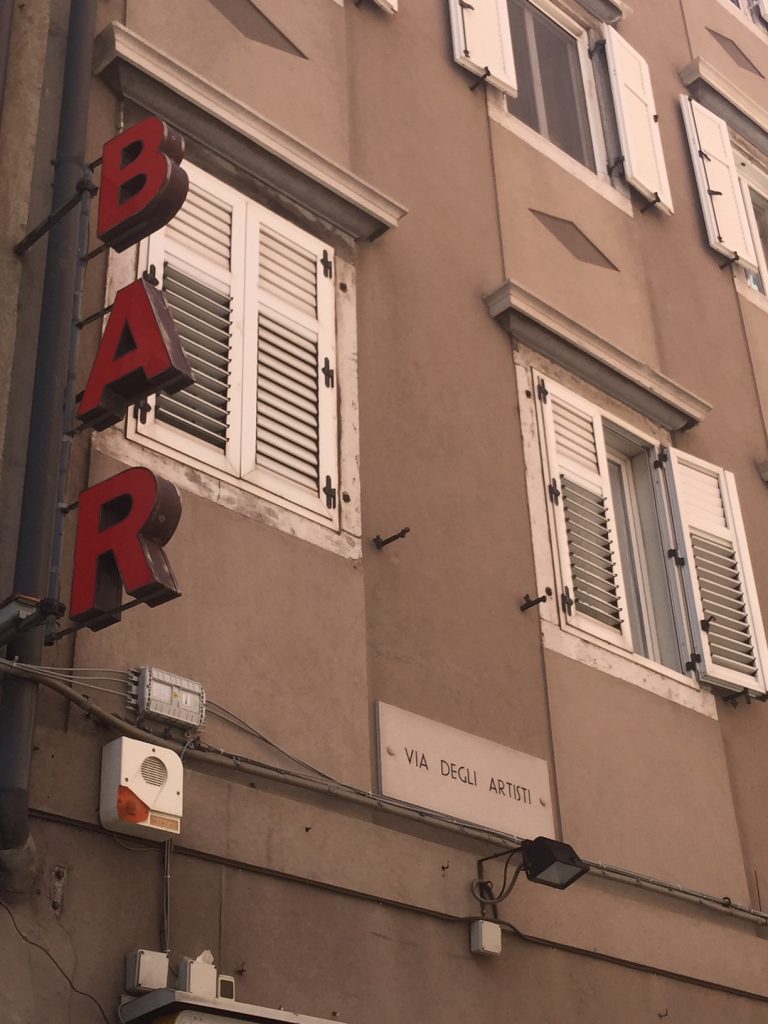
Guetta asked Fontana to include spaces for commercial purposes, such as a big hall. It was rented out for puppet shows, and soon after in 1828, it became the most important Hapsburg theater. Thanks to its elegant and rich decorations, which were typical at the time, it became Triestini’s all time favorite place.

All kinds of operas, plays and comedies were performed at the theater. Eleonora Duse The Divine (her lover Gabriele D’Annunzio coined the nickname for which she became known worldwide) performed at Filodrammatico in 1884 playing Marcolina in La Locandiera, by Carlo Goldoni. It seems Trieste’s theater audience was already quite fussy then, as The Divine, the greatest Italian actress of the time, was mercilessly booed at the end of the performance.
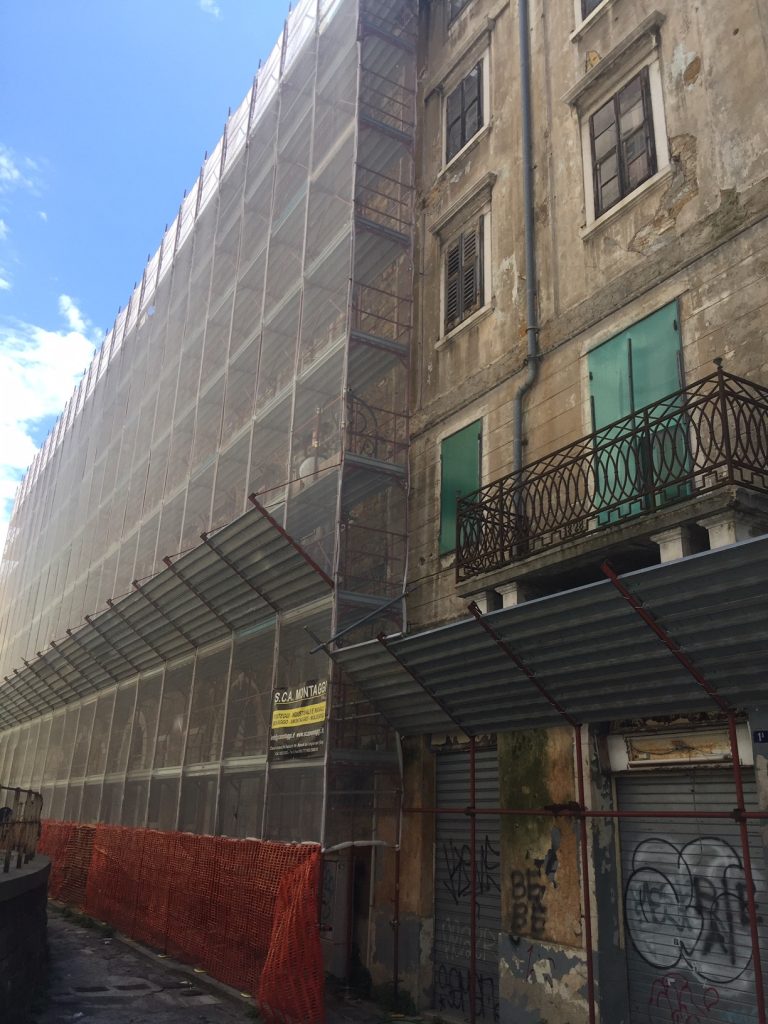
By the beginning of the 1900s the fashionable Theater Filodrammatico seemed ready to face the new century with energy and style. However, in 1907 the Austro – Hungarian authorities shut the theater down because it violated new fire security regulations. It was reopened and converted into a cinema hall in 1921. Long periods of inactivity followed until 1937.
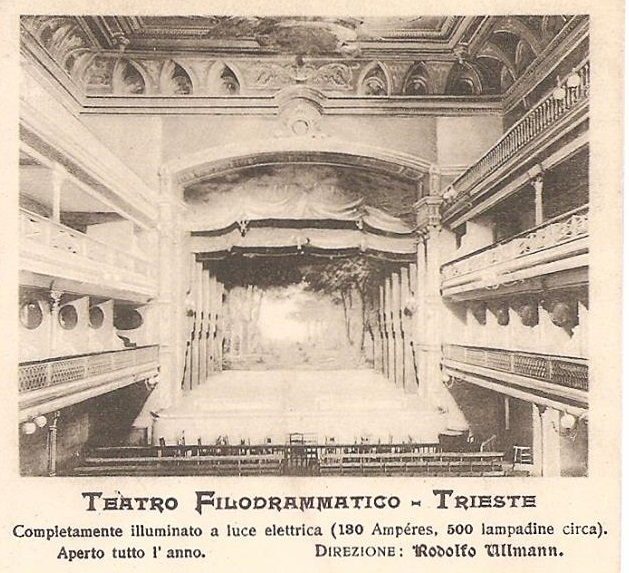
Having survived WWII, Filodrammatico functioned as a cinema until 1972, when brave manager Giorgio Maggiola, owner of all the cinemas in Viale XX Settembre, converted it to a porn cinema making it the first X-rated hall in Italy. Real pornography in catholic Italy was a real scandal then. Maggiola faced several lawsuits and was forced to shut it down many times: his screenings were censured and his reels were confiscated by authorities. The prurient content of films and the constant censorship only increased the notoriety of Filodrammatico. A long line of men (some accompanied by women) waited for its doors to open for the premiere of Deep Throat, which was censured and confiscated the following day.
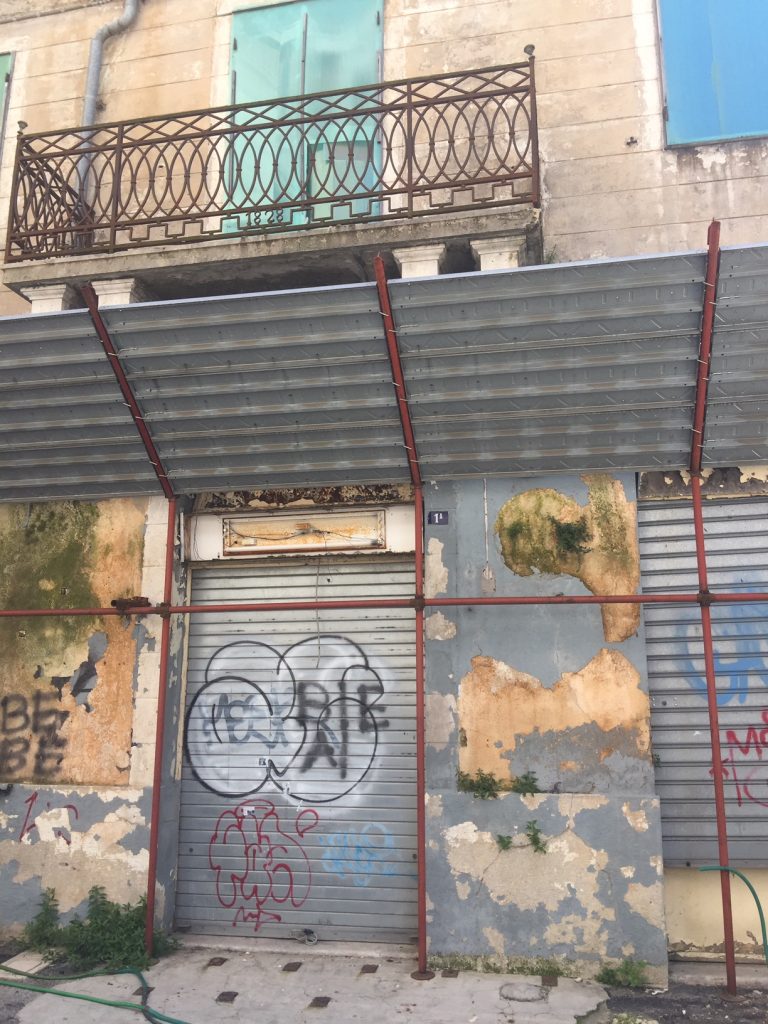
The ongoing crisis of movie theaters in Trieste didn’t spare Filodrammatico, and by 1983 it closed down. Next to it stood the newly opened first Chinese restaurant of Trieste, Shanghai. It was the exotic window to the east for most Triestini, and it bravely survived for five years. By 1988 the whole building was abandoned. Since then one collapse after another, a fire, the place crumbled down, and only the front facade barely survives a complete defeat now.

On 7 May 2020, yet another collapse caused the Municipality to quickly put some scaffolding to avoid a total disaster. In the past 10 years several private enterprises have timidly showed interest in the property with the idea to demolish it and build yet another parking lot. What is certain is that the building is beyond repair, which is an immense loss for the cultural history of Trieste.

























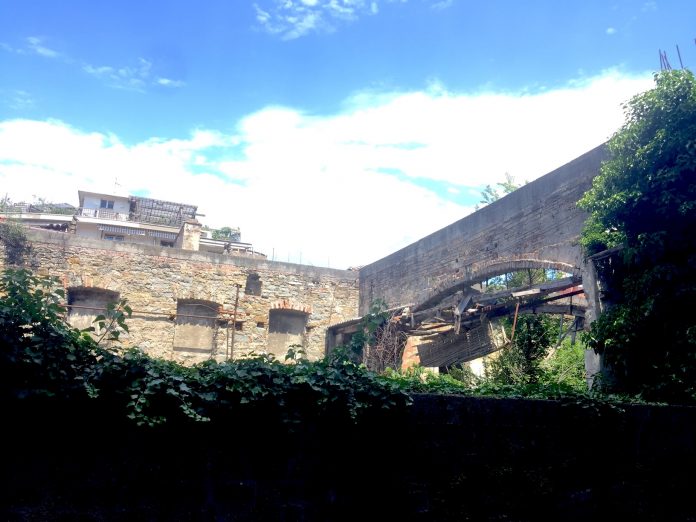




Grazie